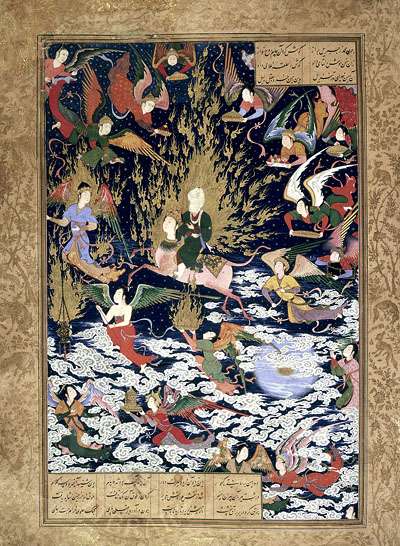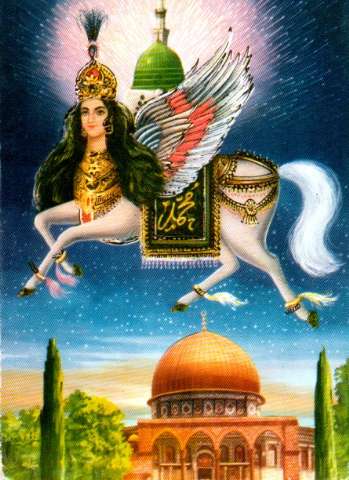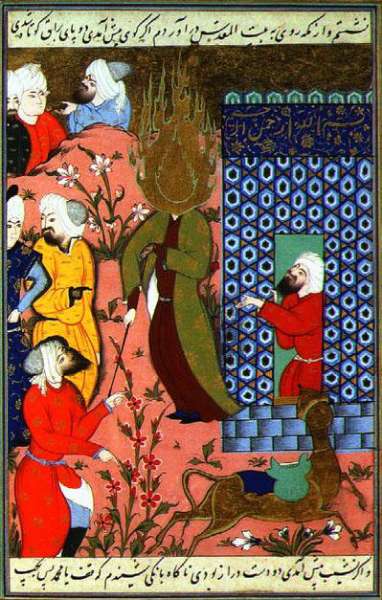In Islam, the Prophet Muhammad's night journey from Mecca to Jerusalem prior to his famous trip to heaven is called Isra'. As alluded to in the Qur'an (17:1), a journey was made by a servant of God, in a single night, from the “sacred place of worship” (al-masjid al-haram) to the “further place of worship” (al-masjid al-aqsa).
Traditionally, there was general agreement that the servant of God was Muhammad and that the “sacred place of worship” was Mecca. Early commentators, however, interpreted the “further place of worship” as heaven, and the entire verse was considered a reference to the Prophet's ascension into heaven (Mi'raj), an ascension which also originated in Mecca. In the period of the Umayyad caliphate (661–750), the “further place of worship” was read as Jerusalem. The two versions were eventually reconciled by regarding the Isra' simply as the night journey and relocating the point of Muhammad's ascension from Mecca to Jerusalem to avoid confusion. Some commentators also suggested that the Isra' was a vision sent to Muhammad in his sleep and not an actual journey at all; but orthodox sentiment has emphatically preserved the physical, thus miraculous, nature of the trip.
The Isra' story, greatly elaborated by tradition, relates that Muhammad made the journey astride Buraq (q.v.), a mythical winged creature, in the company of the archangel Gabriel. Muhammad meets Abraham, Moses, and Jesus in Jerusalem; he then officiates as leader (imam) of the ritual prayer (salat) for all the prophets assembled and establishes his primacy among God's messengers.
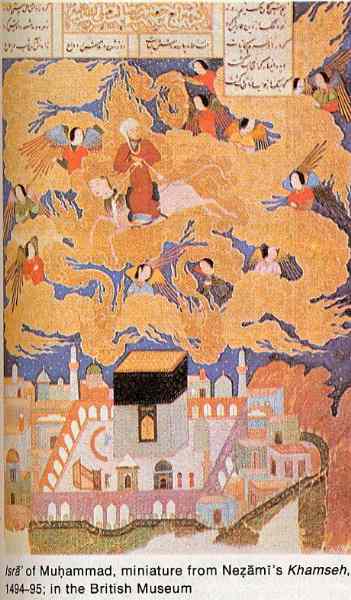
Muhammad and Jibril enter the first heaven and proceed
through all seven levels until they reach the throne of God. Along the
way they meet the prophets Adam, Yahya (John), 'Isa (Jesus), Yusuf (Joseph),
Idris, Harun (Aaron), Musa (Moses), and Ibrahim (Abraham) and visit hell
and paradise. Musa alone of all the inhabitants of heaven speaks
at any length to the visitors; he says that Muhammad is more highly regarded
by God than himself and that Muhammad's following outnumbers his own.
Once Muhammad appears before God—there is some question as to whether he
actually saw him—he is told to recite the salat (ritual prayer) 50 times
each day. Musa, however, advises Muhammad to plead for a reduction
of the number as being too difficult for believers, and the obligation
is eventually reduced to five prayers each day.
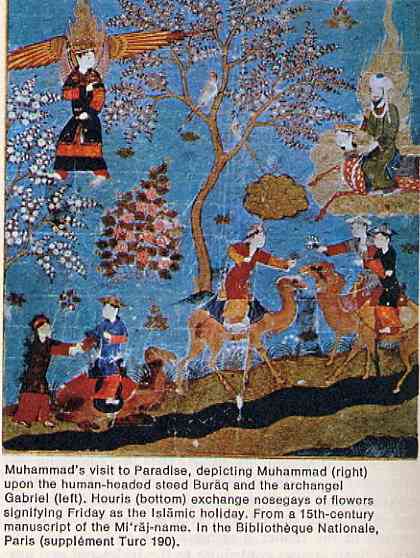
Muhammad's mi'raj has been a constant source of speculation
among Muslims. Some state that the ascension was merely a dream; others
speculate that only Muhammad's soul entered heaven, while his body remained
on earth. Parallels have been drawn between the mi'raj and the manner in
which a dead man's soul will progress to judgment at God's throne; and
the Sufis (Muslim mystics) claim it describes the soul's leap into mystic
knowledge. Popularly the ascension is celebrated with readings of the legend
on the 27th day of Rajab, called Laylat al-Mi'raj (“Night of the Ascension”).
--------------
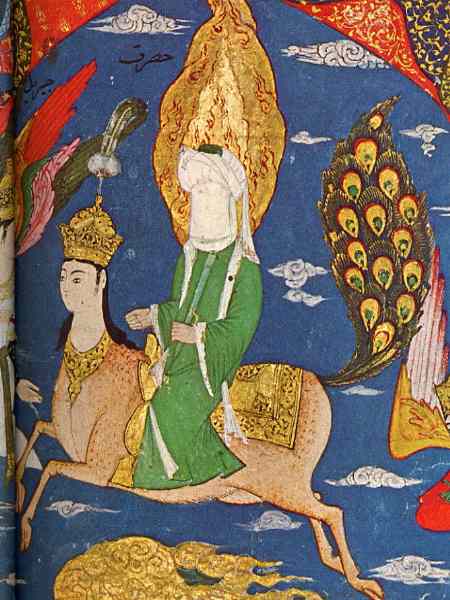
In Islamic tradition, a creature said to have transported the Prophet Muhammad to heaven. Described as “a white animal, half-mule, half-donkey, with wings on its sides . . . ,” Buraq was originally introduced into the story of Muhammad's night journey (isra') from Mecca to Jerusalem and back, thus explaining how the journey between the cities could have been completed in a single night. In some traditions he became a steed with the head of a woman and the tail of a peacock. As the tale of the night journey (isra') became connected with that of Muhammad's ascension to heaven (mi'raj), Buraq replaced the ladder as Muhammad's means of access into heaven.
From at least the 14th century, the Buraq myth, visualized
on the basis of ancient depictions of griffins, sphinxes, and centaurs,
became a favourite subject of Persian miniature painting.
Some additional paintings on Miraj
